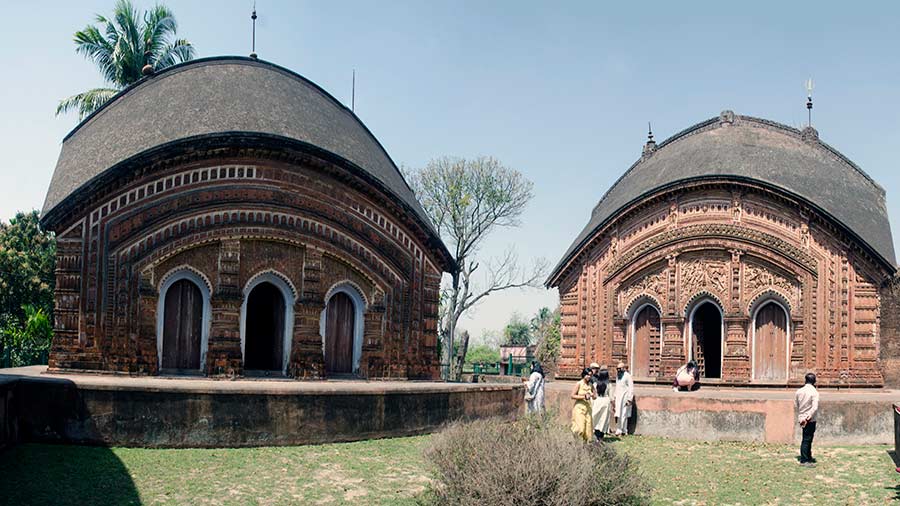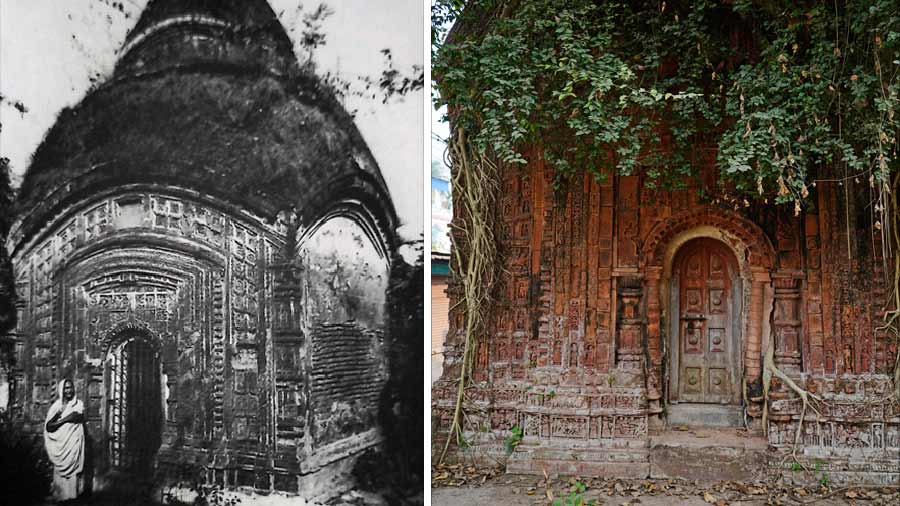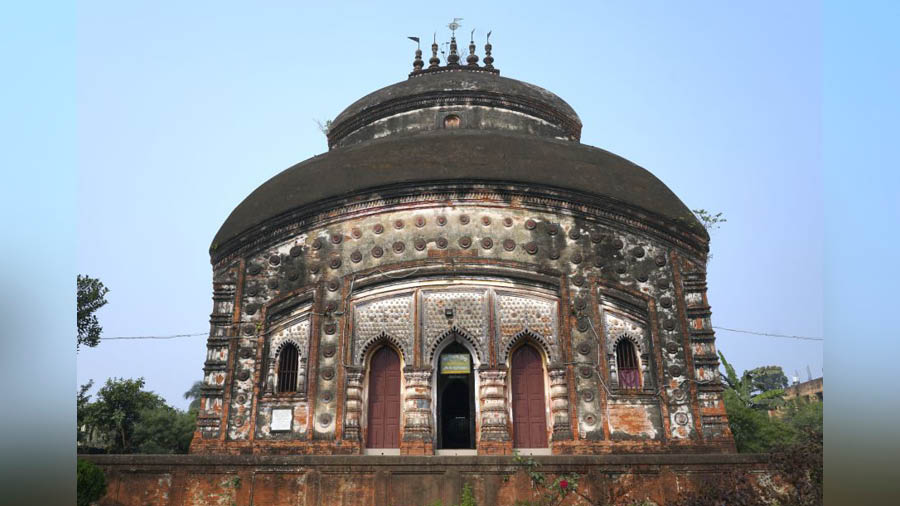Baranagar has always lived under the shadows of its more famed counterpart, Murshidabad. It is located on the other side of the Bhagirathi River and also has its share of history. A series of amazing temples, complete with intricate stucco and terracotta ornamentation, can well turn Baranagar into an add-on destination from Murshidabad.

Another view of the Char Bangla Temple Complex
The history of Baranagar dates back to the time of Rani Bhabani (1716 – 95) of Natore, who was the female zamindar of Rajshahi (both Natore and Rajshahi are presently in Bangladesh). She was married to Raja Ramkanta, the zamindar of Rajshahi and after his death in 1748, she took charge of the zamindari and expanded it. She was an able administrator and maintained a good relationship with the British. She led a very austere and religious life and was known for her philanthropic activities. Later, Rani Bhabani shifted her capital to Baranagar and decided to turn it into a second Varanasi by building 108 Shiva temples. Many of the temples built by Rani Bhabani have been engulfed by the changing course of the Bhagirathi River but a few have survived and stand to this day.
Char Bangla Temple Complex:

Terracotta ornamentation of a Char Bangla temple
The Char Bangla Temple Complex is the prime attraction of Baranagar. It has four temples built in Bengali do-chala style and hence the name. The do-chala style represents the typical thatched roof huts seen in Bengal. Here, you’ll see two sloping roofs (or chalas) — both in the front and back. The complex dates back to 1755 and houses three Shivlings approached by a triple arched entrance. Three of the temples have intricate terracotta ornamentation while the fourth one has elaborate stucco work.
Gangeshwar Temple:
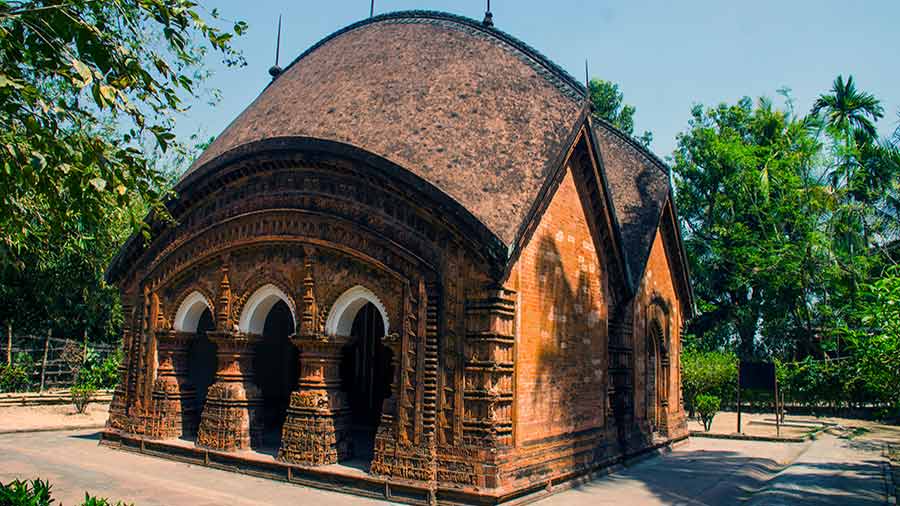
The Gangeshwar Temple
The other attraction of Baranagar is the Gangeshwar Temple, which follows the jora-Bangla type of architecture. In jora-Bangla style, two do-chala temples are joined side by side and hence the name. This temple also has a triple arched entrance. The intricate terracotta ornamentation of the front façade makes the temple unique.
Bhavaniswar Temple:
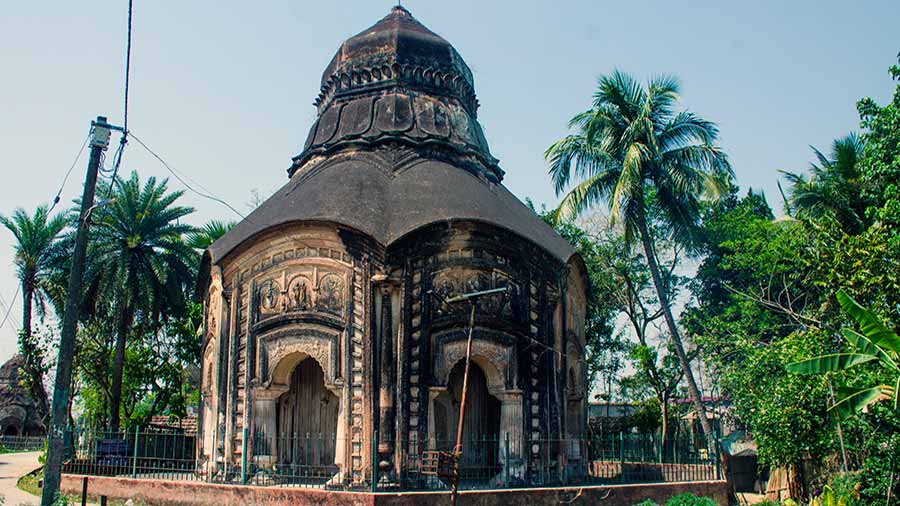
Bhavaniswar Temple
The octagonal Bhavaniswar Temple has a unique architectural style and is topped with an inverted lotus shaped dome. The temple was constructed in 1755 by Tarasundari, daughter of Rani Bhabani. The temple has arched entrances on all the eight sides and both the inner and outer walls contain intricate terracotta ornamentation depicting gods and goddesses along with mythological stories complete with floral patterns. Next to the Bhavaniswar Temple are two similar temples but much smaller in size. Sadly, the temples are in a crumbling stage with the plaster peeled off along with the ornamentation.
Panchamukhi Temple:
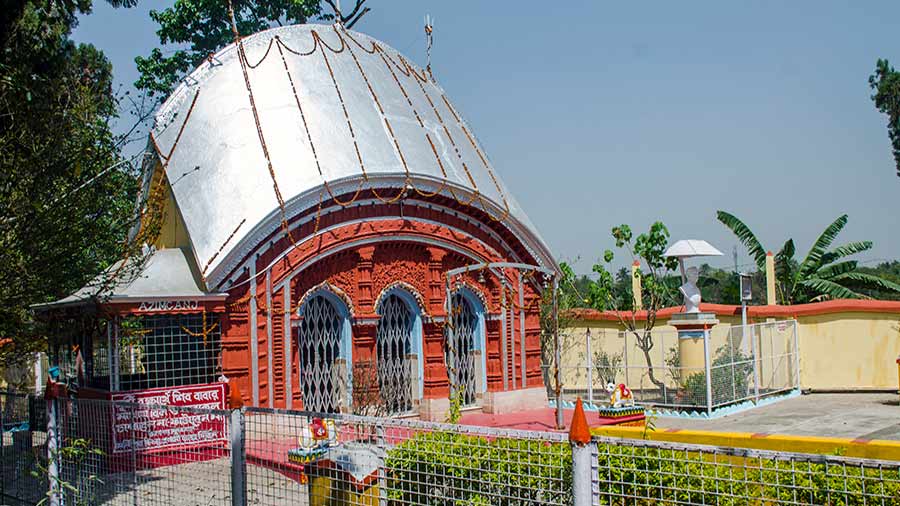
The Panchamukhi Temple
The last temple in Baranagar is the Panchamukhi temple. And as the name suggests, the Shivling of the temple consists of five faces. It follows the typical do-chala style of architecture. It is an active temple and has been given a modern look.
Travel Information:

Stucco ornamentation of Bhavaniswar Temple
- Baranagar doesn’t have much tourist infrastructure, so the tour is best done from Murshidabad. Totos are available from Murshidabad
- Bari Kothi, a heritage boutique hotel located in Azimganj, is just south of Baranagar. They arrange specially curated tours of Baranagar, which include ferry rides along the Bhagiarathi. But that’s very expensive as well
